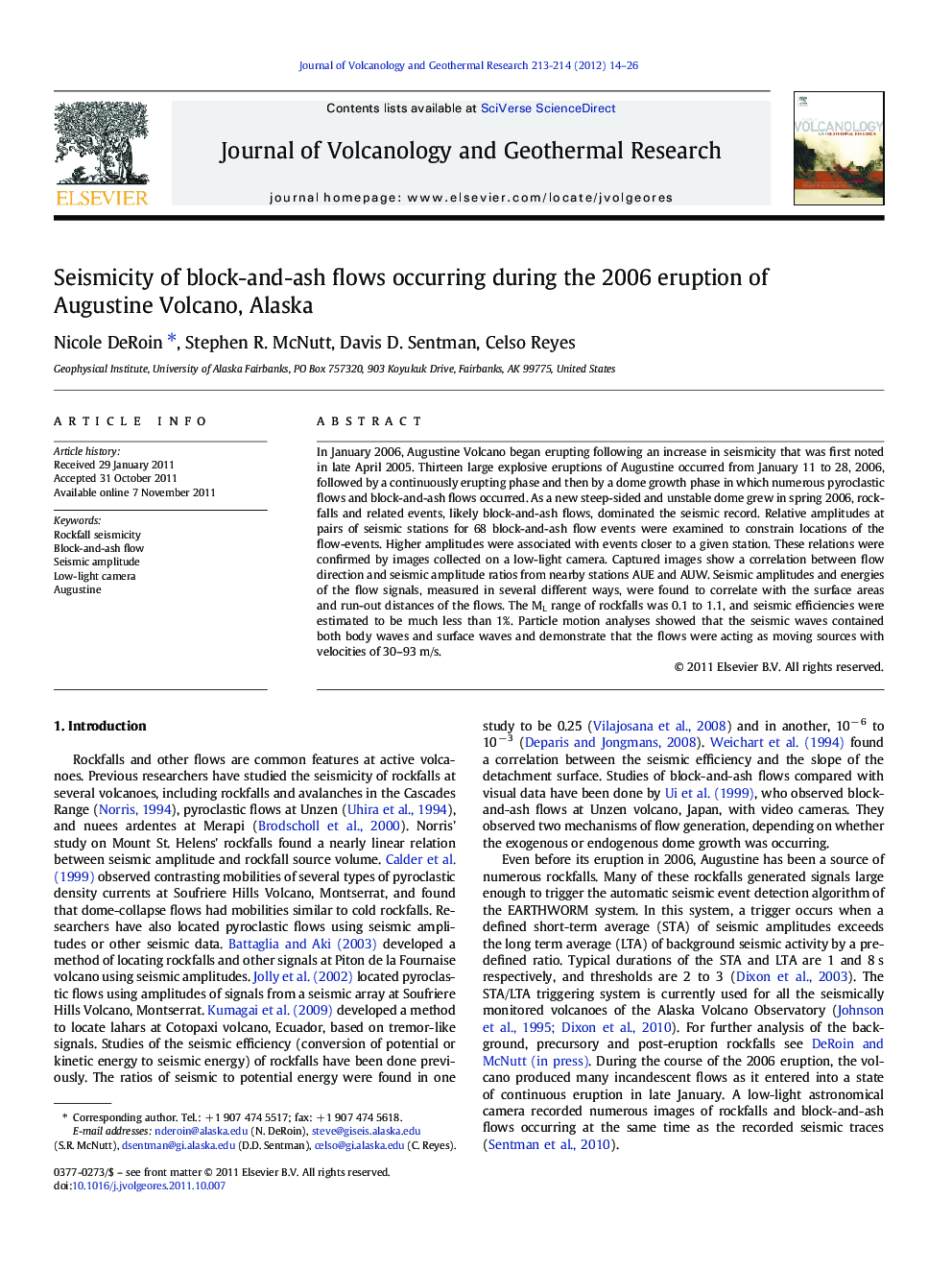| Article ID | Journal | Published Year | Pages | File Type |
|---|---|---|---|---|
| 4713712 | Journal of Volcanology and Geothermal Research | 2012 | 13 Pages |
In January 2006, Augustine Volcano began erupting following an increase in seismicity that was first noted in late April 2005. Thirteen large explosive eruptions of Augustine occurred from January 11 to 28, 2006, followed by a continuously erupting phase and then by a dome growth phase in which numerous pyroclastic flows and block-and-ash flows occurred. As a new steep-sided and unstable dome grew in spring 2006, rockfalls and related events, likely block-and-ash flows, dominated the seismic record. Relative amplitudes at pairs of seismic stations for 68 block-and-ash flow events were examined to constrain locations of the flow-events. Higher amplitudes were associated with events closer to a given station. These relations were confirmed by images collected on a low-light camera. Captured images show a correlation between flow direction and seismic amplitude ratios from nearby stations AUE and AUW. Seismic amplitudes and energies of the flow signals, measured in several different ways, were found to correlate with the surface areas and run-out distances of the flows. The ML range of rockfalls was 0.1 to 1.1, and seismic efficiencies were estimated to be much less than 1%. Particle motion analyses showed that the seismic waves contained both body waves and surface waves and demonstrate that the flows were acting as moving sources with velocities of 30–93 m/s.
► Joint analyses of seismic and low-light camera data of block-and-ash flows during eruption were performed. ► Ratios of seismic amplitudes between stations correlate well with the block-and-ash flow locations. ► Seismic amplitudes correlate with flow sizes and run-out distances.
